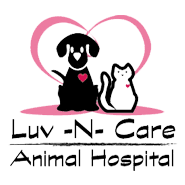Library
-
Flea and tick prevention consists of a variety of products used to control flea and/or tick infestations on your pet and to prevent infestations inside the home. Fleas and ticks can be found worldwide and can live in many climate zones. Prevention is key to avoid infestations and to prevent disease; preventatives are discussed. Your veterinarian will help you find an appropriate product that works best for you and your pet.
-
Fleas are the most common nuisance and parasite affecting cats, and an infestation can lead to serious health problems. Flea control requires a three-pronged approach; they need to be eliminated from 1) your cat, 2) any other cats and dogs that you have, 3) your home and yard. There are many flea control products available and your veterinarian can help you determine which are safest and most effective for your pets.
-
Overweight cats have an increased risk of many health conditions, including diabetes, arthritis, high blood pressure, and some forms of cancer. This article reviews the components of a strong weight loss plan and includes tips for success to discourage begging and help promote healthy weight loss in cats who live in a multi-cat household.
-
Overweight dogs have an increased risk of many health conditions, including diabetes, arthritis, high blood pressure, and some forms of cancer. This article reviews the components of a strong weight loss plan and includes tips for success to discourage begging and help promote healthy weight loss in dogs who live in a multi-dog household.
-
Adverse food reactions in cats are either caused by food allergy – an immune response to something ingested or food intolerance – a non-immunological response to something ingested. Signs of food intolerance are generally digestive in nature only. Food intolerance will generally occur on the initial exposure to the food or food additive in contrast to food allergy which requires repeated exposures to develop. Different causes of food intolerance include food poisoning, or inappropriate ingestion of an irritant, reaction to food additives, histamine reactions, lactose intolerance and dietary indiscretion such as eating fat or bones. A dietary history is important in diagnosing these conditions.
-
Adverse food reactions in dogs are either caused by food allergy – an immune response to something ingested or food intolerance – a non-immunological response to something ingested. Signs of food intolerance are usually only digestive in nature. Food intolerance will generally occur on the initial exposure to the food or food additive in contrast to food allergy which requires repeated exposures to develop. Different causes of food intolerance include food poisoning, or inappropriate ingestion of an irritant, reaction to food additives, histamine reactions, lactose intolerance and dietary indiscretion such as eating fat or bones. A dietary history is important in diagnosing these conditions.
-
Dogs often break their teeth from chewing on bones, antlers, and hard chew toys. There are five classifications of tooth fractures and each needs treatment to avoid tooth sensitivity and pain. Clinical signs include chewing on one side of the mouth, excessive drooling, dropping food while eating, pawing at the mouth, and facial swelling. Your veterinarian may perform a root canal or extract the tooth. Eliminating hard chew toys and treats can prevent tooth fractures.
-
The Frenchie is a quiet but sociable dog who continues to love snoozing on human laps and otherwise cuddle at every opportunity.
-
Frostbite is the damage that is caused to the skin and other tissues due to extreme cold. The paws, ears, and tail are the most common tissues to be affected. If you suspect your dog has frostbite, you should seek medical attention immediately. Mild cases of frostbite usually resolve with little permanent damage, while more severe frostbite may result in permanent disfiguration or alteration of the affected tissues.
-
Gastrostomy tubes are placed through the skin of the abdomen into the stomach to enable long-term nutrition in dogs that either refuse to eat or are unable to chew and swallow food. A special liquid diet or homemade mixture liquefied with water will be recommended by your veterinarian. Step-by-step instructions are provided. The decision to remove the tube will be determined by your veterinarian.

